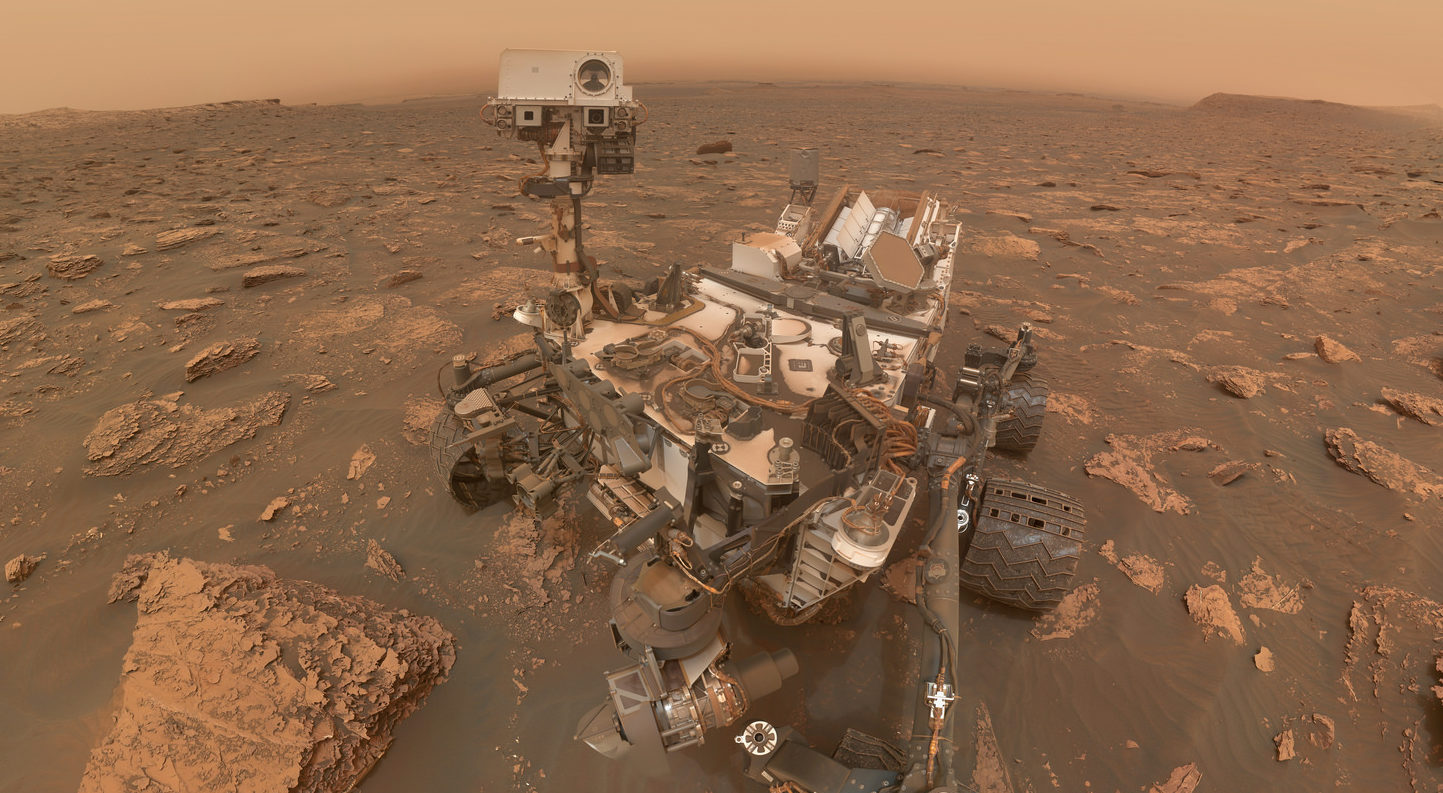
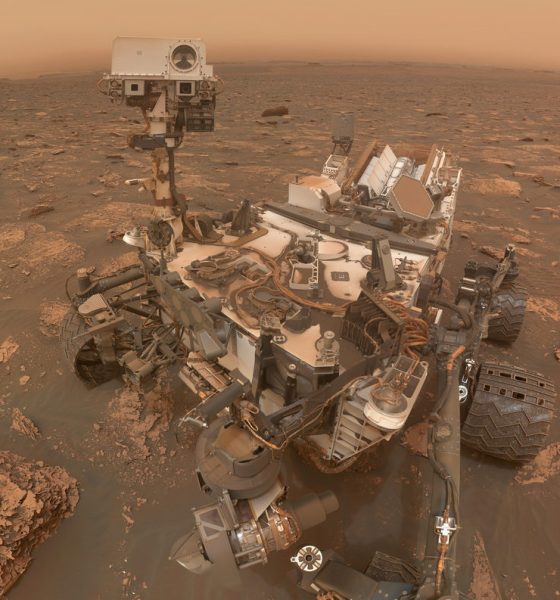
Space
NASA's resilient Curiosity Rover bounces back once more after attitude issue
NASA’s Curiosity rover had a little attitude problem earlier this week. The issue sidelined the rover for a brief time, but the golf cart-sized robot is back to roaming the red planet.
In rover speak, “attitude” doesn’t mean Curiosity is being sassy, but rather it refers to the robot’s position in space. Curiosity needs to know where it and its robotic arm (which is where the robot’s instruments are kept) are at all times. This helps keep the rover safe.
If Curiosity fails to keep track of its attitude, it could accidentally point one of its cameras towards the sun or even damage an instrument by hitting it on a nearby rock or boulder.
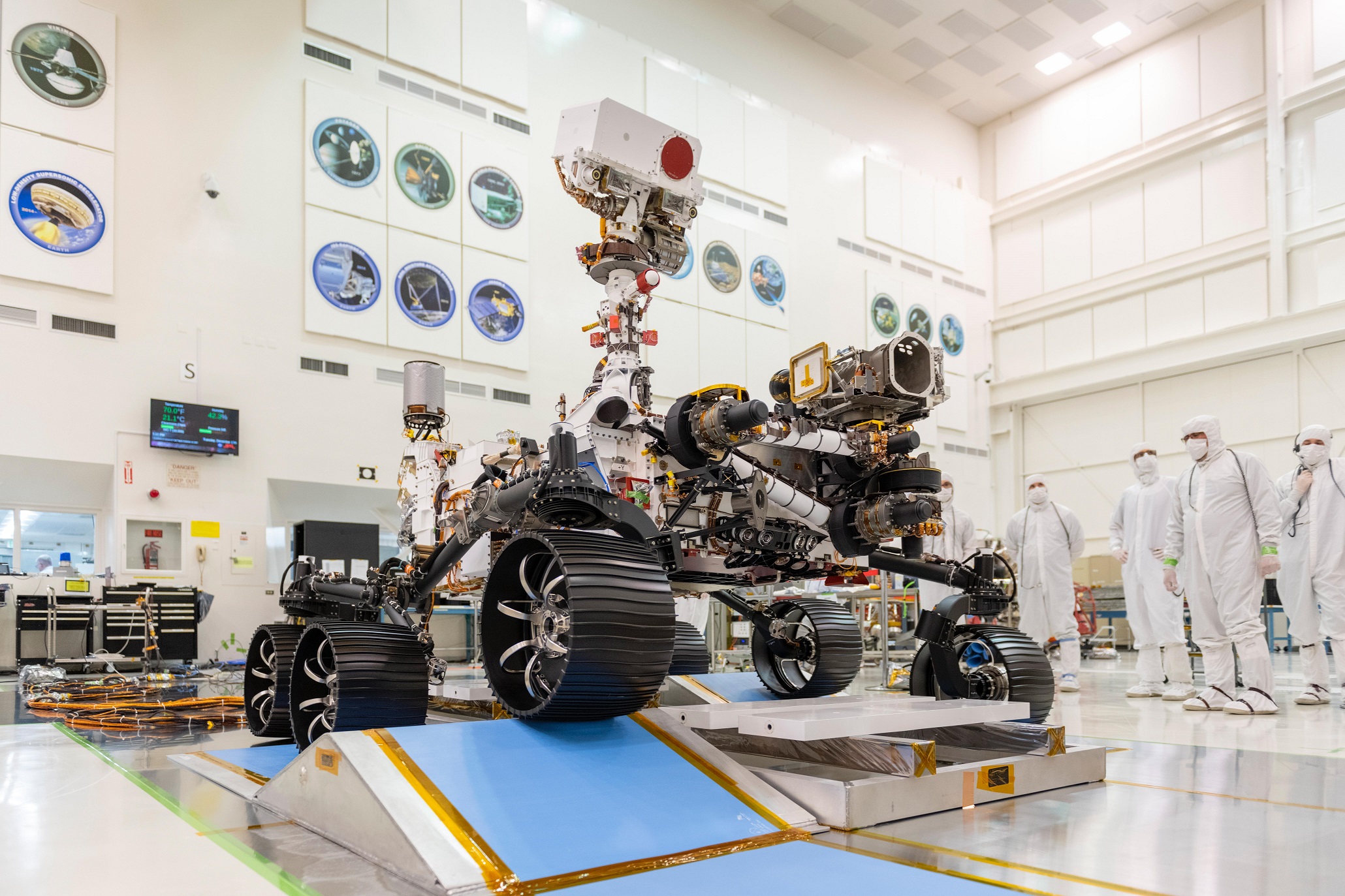
“Partway through its last set of activities, Curiosity lost its orientation. Some knowledge of its attitude was not quite right, so it couldn’t make the essential safety evaluation,” Dawn Sumner, a planetary geologist and Curiosity team member wrote in a mission update on Monday (Jan. 20).
“Thus, Curiosity stopped moving, freezing in place until its knowledge of its orientation can be recovered,” she added. “Curiosity kept sending us information, so we know what happened and can develop a recovery plan.”
Curiosity has explored the Martian surface since 2012, and over the course of its mission, the rover has bounced back from numerous glitches—this was no exception. Thanks to the robot’s handlers, a plan was quickly implemented and Curiosity started moving again.
Their plan was to manually send the robot its location information. Soon after, Curiosity was back in action.
 The Curiosity rover captures a view of an outcrop with finely layered rocks within the ‘Murray Buttes’ region on lower Mount Sharp. Credit: NASA/JPL-Caltech
The Curiosity rover captures a view of an outcrop with finely layered rocks within the ‘Murray Buttes’ region on lower Mount Sharp. Credit: NASA/JPL-Caltech
“We learned this morning that plan was successful and Curiosity was ready for science once more!” said Scott Guzewich, mission team member and atmospheric scientist at NASA’s Goddard Space Flight Center in Greenbelt, Maryland, wrote in a subsequent update.
This isn’t the first time the rover dealt with issues. Curiosity has overcome multiple glitches and setbacks during its time on Mars. But thanks to a robust design and a team of highly-skilled engineers, the rover has been able to work through the various issues that have popped up. (Including memory issues as well as damage to its wheels from the rougher-than-expected Martian terrain.)
In fact, Curiosity originally had just a two-year mission, but has performed so well, that the six-wheeled rover is in its seventh year.
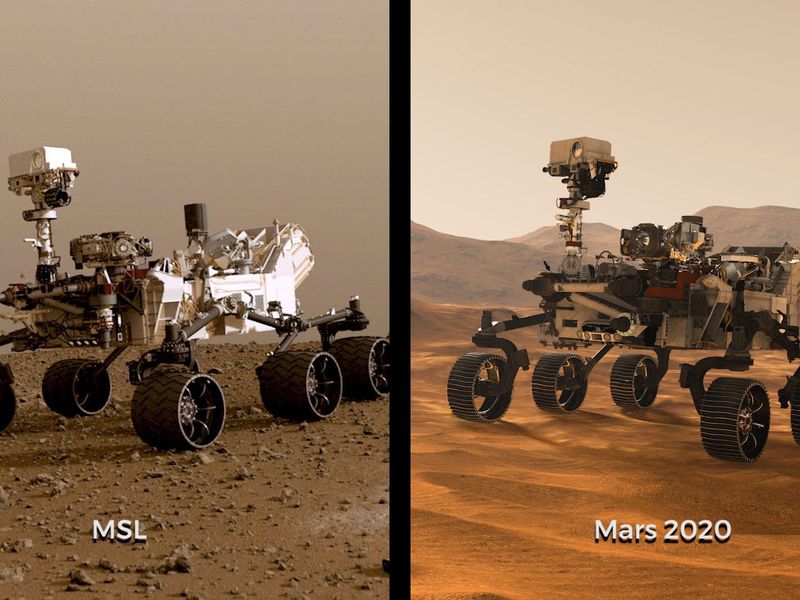 A side-by-side view of the Mars 2020 and Curiosity rovers. Credit: NASA/JPL-Cal-Tech
A side-by-side view of the Mars 2020 and Curiosity rovers. Credit: NASA/JPL-Cal-Tech
The rover landed inside Gale Crater, a 96-mile-wide (154-kilometer) crater in August 2012, and was tasked with assessing the region’s habitability. Did life once flourish in this spot? So far, Curiosity has not found direct evidence of past life on Mars, but the rolling scientist did discover that the spot was once home to a lake and stream system, some time in Mars’s past.
Currently, the rover is exploring the foothills of Mount Sharp, a 3.4-mile-high mountain jetting up from the crater’s center. Here, the rover will look for clues about Mars’s ancient climate and how it changed over millions of years.
Right now, Curiosity is the only functioning rover on the red planet’s surface. NASA’s storied Opportunity rover was shut down following a planet-wide dust storm that blocked out the lift-sustaining sunshine the rover needed to power its batteries.
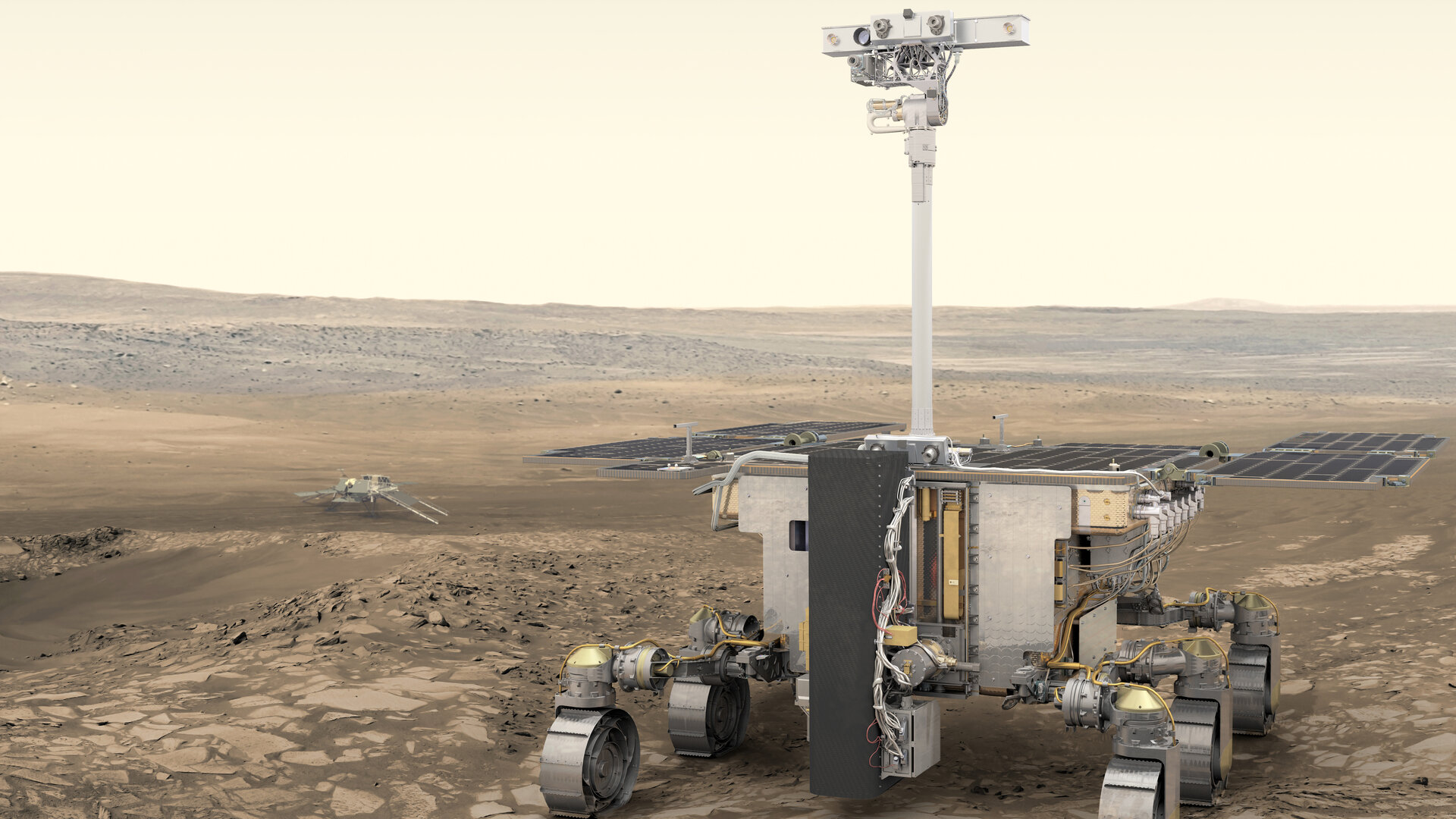 ESA’s ExoMars rover will roam the rusty Martian surface in search for signs of life.
ESA’s ExoMars rover will roam the rusty Martian surface in search for signs of life.In July, NASA will be sending its next rover—a souped up version of Curiosity—to Mars. Designed to search for signs of life, the Mars 2020 rover will arrive on the red planet in March 2021. Landing in Jezero Crater, the rover will bag up samples for return to Earth at a later time.
But that’s not all. The European Space Agency (ESA) is teaming with Russia’s Roscosmos to send its own rover to Mars. The Rosalind Franklin, ExoMars rover will also look for signs of past life on Mars.

Cybertruck
Tesla Cybertruck fleet takes over at SpaceX’s Starbase
Interestingly, the Cybertruck uses the same exterior, a stainless steel alloy, as SpaceX rockets. This synergy between the two companies and their very different products shows a very unified mentality between Musk companies.

Tesla Cybertrucks have taken over at SpaceX’s Starbase facility in Texas, as hundreds of the all-electric pickup trucks were spotted late last week rounding out a massive fleet of vehicles.
The Cybertruck fleet is geared toward replacing gas vehicles that are used at Starbase for everyday operations. The only surprise about this is that it was not done sooner:
Was just visiting. pic.twitter.com/5Q9wPPaeuH
— Derek Li (@derek1ee) October 31, 2025
Deliveries have been going on for a few weeks, as Cybertrucks have made their way across the state of Texas from Austin to Starbase so they could be included in SpaceX’s fleet of vehicles at the facility.
Interestingly, the Cybertruck uses the same exterior, a stainless steel alloy, as SpaceX rockets. This synergy between the two companies and their very different products shows a very unified mentality between Musk companies.
However, there are some other perspectives to consider as SpaceX is utilizing such a massive fleet of Cybertrucks. Some media outlets (unsurprisingly) are seeing this as a move of weakness by both Tesla and SpaceX, as the aerospace company is, in a sense, “bailing out” lagging sales for the all-electric pickup.
It’s no secret that Tesla has struggled with the Cybertruck this year, and deliveries have been underwhelming in the sense that the company was anticipating between 1 million and 2 million orders for the vehicle before it was widely produced.
A lot of things changed with the Cybertruck between its 2019 unveiling and 2023 initial deliveries, most notably, price.
The price of the Cybertruck swelled significantly and priced out many of those who had pre-ordered it. Some have weighed the option of whether this purchase was a way to get rid of sitting inventory.
However, it seems more logical to consider the fact that SpaceX was likely always going to transition to Teslas for its fleet, especially at Starship, at some point.
It doesn’t seem out of the question that one Musk company would utilize another Musk company’s products, especially considering the Cybertruck has been teased as the vehicle that would be present on Mars.
News
SpaceX opens up free Starlink service for those impacted by Hurricane Melissa
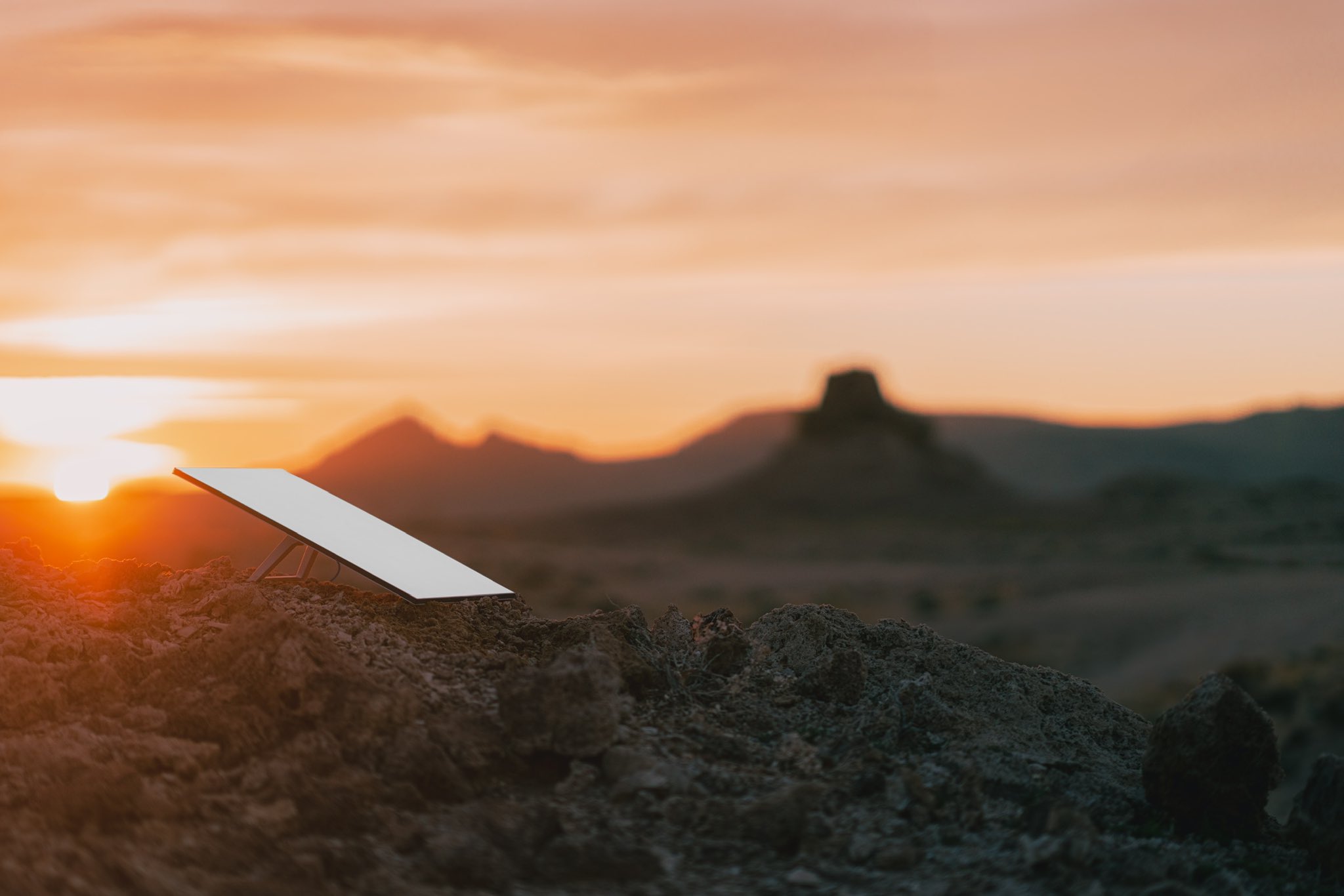
SpaceX is opening up its internet service, Starlink, to those impacted by Hurricane Melissa, as it made landfall in Jamaica and the Bahamas as a Category 5 storm.
Hurricane Melissa is expected to reach wind speeds of over 165 MPH over the next few days as it extends out into the Atlantic Ocean by Thursday and Friday.
Satellite imagery shows Hurricane #Melissa‘s growth from its formation on October 21 to a Category 5 hurricane through October 27, 2025. #HurricaneMelissa pic.twitter.com/goR3Hbgb9c
— The Weather Network (@weathernetwork) October 27, 2025
Citizens in Jamaica and the Bahamas have been preparing for the storm for the past week, getting necessary goods together and preparing for the massive storm to arrive. It finally did yesterday, and the first images and video of the storm are showing that it could destroy many parts of both countries.
Starlink is now being opened up for free until the end of November for those impacted by the storm in Jamaica and the Bahamas, SpaceX announced today:
For those impacted by Hurricane Melissa in Jamaica and the Bahamas, Starlink service is now free through the end of November to help with response and recovery efforts → https://t.co/fUko3xSviJ
— Starlink (@Starlink) October 28, 2025
It is a move similar to the one the company made last year as Hurricane Helene made its way through the United States, destroying homes and property across the East Coast. SpaceX offered free service for those impacted by the destruction caused by the storm.
The free Starlink service was available until the end of 2024.
Elon Musk’s companies have also made similar moves to help out those who are impacted by natural disasters. Tesla has offered Free Supercharging in the past, most notably during the California wildfires.
Tesla and SpaceX’s LA fire relief efforts: Cybertrucks, free Starlink and more
One major advantage of Starlink is that it is available for use in situations like this one, where power might be required to operate things like a modem and router.
Internet access is a crucial part of survival in these situations, especially as it can be the last leg some stand on to get in touch with emergency services or loved ones.
News
SpaceX reaches incredible Starlink milestone
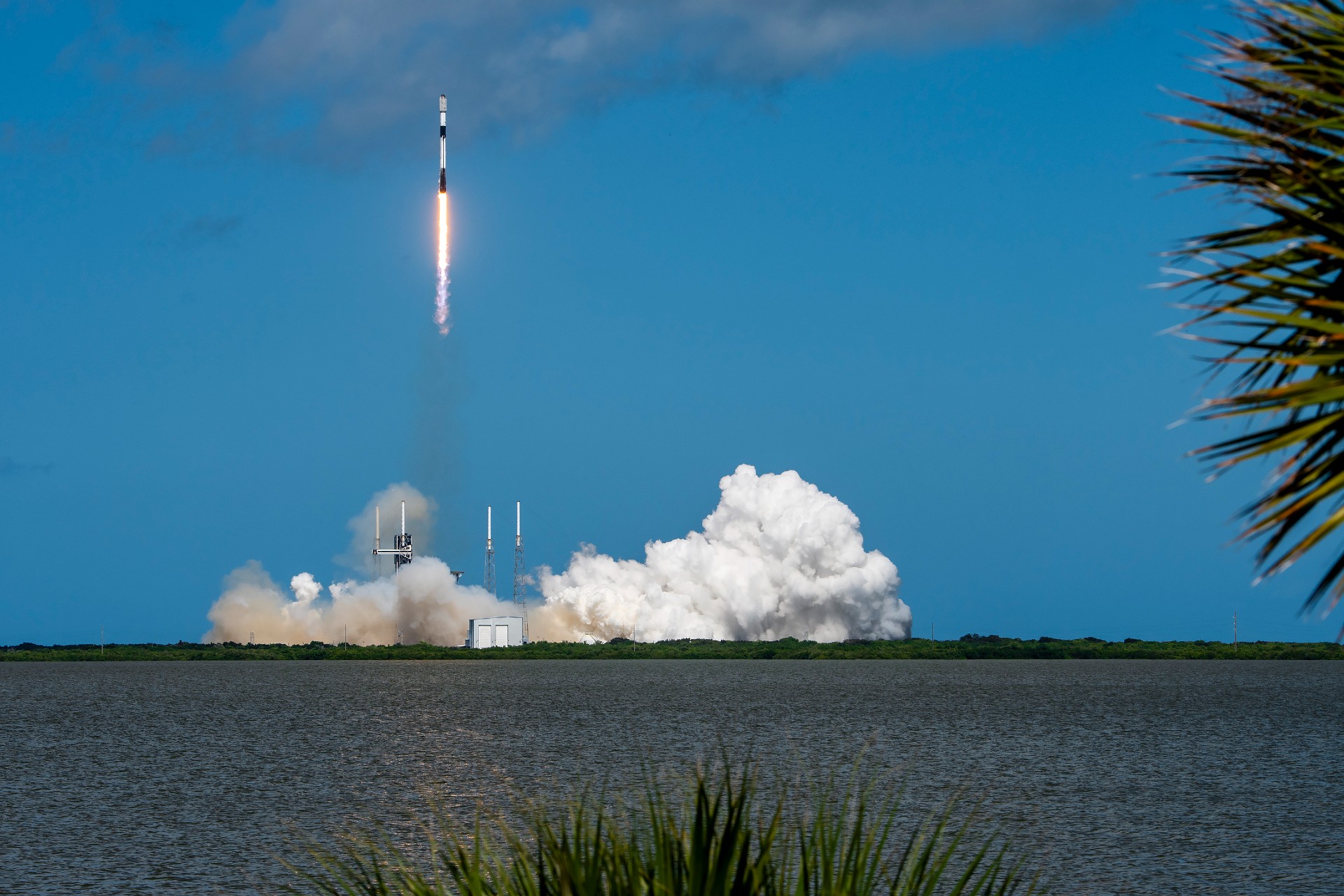
SpaceX has reached an incredible milestone with its Starlink program, officially surpassing 10,000 satellites launched into low Earth orbit since starting the program back in 2019.
Last Sunday, October 19, SpaceX launched its 131st and 132nd Falcon 9 missions of 2025, one from Cape Canaveral, Florida, and the other from Vandenberg, California.
The 10,000th Starlink satellite was aboard the launch from California, which was Starlink 11-19, and held 28 v2 mini optimized satellites.
The achievement was marked by a satellite tracker developed by Jonathan McDowell.
🚨 With its Falcon 9 launch last Sunday, SpaceX officially has 10,000 Starlink satellites in orbit pic.twitter.com/xS5RVZ4ix0
— TESLARATI (@Teslarati) October 26, 2025
The first Starlink launch was all the way back on May 23, 2019, as SpaceX launched its first 60 satellites from Cape Canaveral using a Falcon 9 rocket.
Of the over 10,000 satellites in orbit, the tracker says 8,608 are operational, as some are intentionally de-orbited after becoming faulty and destroyed in the atmosphere.
SpaceX has truly done some really incredible things during its development of the Starlink program, including launch coverage in a global setting, bringing along millions of active subscribers that use the service for personal and business use, locking up commercial partnerships, and more.
Starlink currently operates in around 150 countries, territories, and markets and is available at least somewhere on all seven continents.
Additionally, Starlink has over 5 million subscribers worldwide, and 2.7 million have joined the program over the past year. It has revolutionized internet access on commercial aircraft as well, as several high-profile airlines like Qatar and United, among many others, have already installed Starlink on some of their planes to deliver more stable connectivity for passengers and crew.
SpaceX has the approval to launch 12,000 Starlink satellites from the FAA, but it plans to bring over 30,000 to its constellation, giving anyone the ability to have access to high-speed internet.








